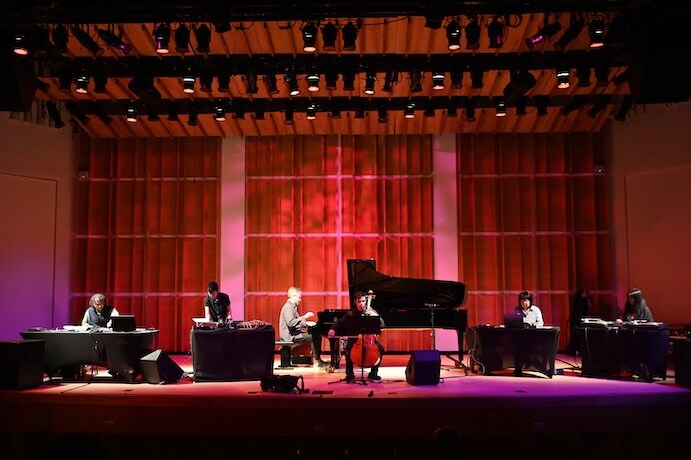On Oct. 9 at Merkin Hall, the Kaufman Music Center presented the second installment in this season’s Artist as Curator series, a program that promises “thrilling performances curated by groundbreaking artists.” It’s fitting, then, that Marcos Balter should be on this program, as his music is captivating, never predictable, and, well – thrilling.
The featured work of the evening was Balter’s Three Enigmas, a duo for cello and piano commissioned by the 92nd Street Y. The piece currently consists of two movements (I. “Kerning” and II. “Reticulárea”) that explore ideas of visual space in the acoustic realm, with a third movement expected later this year. In the program notes, the composer explained the sources of his creative inspiration for the piece. “Kerning” is a typographical method in which asymmetry, rather than rigid precision, is embraced to produce a beautiful work renowned for its sense of proportion and perceptual harmony.

“Reticulárea” takes inspiration from the three-dimensional creations of visual artist Gego (Gertrud Goldschmidt); in this movement, there is a persistent sense of metamorphosis and an awareness of dynamic balance between motion and stasis. Originally, the evening’s program was conceived in two parts, with the first being a performance of the work as it currently exists, and the second as a collective improvisation on the work, titled Enigmas Remixed. However, Balter explained that during the ensemble’s rehearsal process, it became clear that it would be best to exclusively present the new collaborative work rather than, as he put it, “the thing, and then the thing with some stuff on top.”
This proved to be a wise decision, and one that allowed for an hour-long acoustic adventure to organically unfold. Surrounded by a cadre of electronic artists, pianist Conor Hanick and cellist Jay Campbell were fully engrossed in the deeply intimate interplay of two great chamber musicians. Around them, Maria Chávez, Gladstone Deluxe, Ikue Mori, and Senem Pirler contributed to the vibrant dialogue from the start, layering and interjecting phrases in tandem with the piano and cello.
The remixed version of “Kerning” opened with a low, steady electronic drum beat that slowly blended into the gentle, sustained interjections from cello and piano. Melodies emerged from an ever-changing acoustic fabric, sometimes slowly, other times abruptly – shimmering harmonics were followed by piercing birdcalls, chimes, taps, and scratches; tremolos and static bursts boldly punctuated the richly-hued soundscape. Textures shifted from one to another in a way that seemed much more coordinated than extemporized. Densely constructed climaxes gave way to periods of repose, and the meandering nature of the piece led to a highly unpredictable experience, keeping us on our toes and constantly guessing what was coming next.

Throughout the evening, the performers were highly aware of each other’s contributions; they gave space to one another’s ideas and answered thoughtfully with their own. The rapidly changing landscape and multiple unique electronic systems, each with their own acoustic setup, made for an interesting game of “who’s playing now?” Bursts of static emissions were followed by vibrating string tremolos; high whistle tones unfolded into shifting harmonics, which faded into extended percussive passages filled with the sound of rattles and woodblocks. As much as the voices wove in and out of the texture, they also maintained their independence: taking center stage, then fading away as another voice came forward, ushering wave upon wave of sounds emanating from a diverse and seemingly infinite palette. This mindful balance ensured that each part could be heard, no matter how many players were at work.
While I valued hearing Enigmas Remixed with fresh ears, I also hope to hear the movements in their original form to better understand and appreciate the source material from which these innovative and exciting improvisations came. But the remix alone was quite the treat. The collaboration, as much as it was improvised, was highly coordinated – the work of intensely thoughtful and intelligent collaborators who could, at a moment’s notice, respond to one another to drive the work forward. Eventually, after a long and winding journey, the sounds receded and the work came to its final silence gently, as pensive and soft as it had begun.
I CARE IF YOU LISTEN is an editorially-independent program of the American Composers Forum, and is made possible thanks to generous donor and institutional support. Opinions expressed are solely those of the author and may not represent the views of ICIYL or ACF.
You can support the work of ICIYL with a tax-deductible gift to ACF. For more on ACF, visit composersforum.org.
























